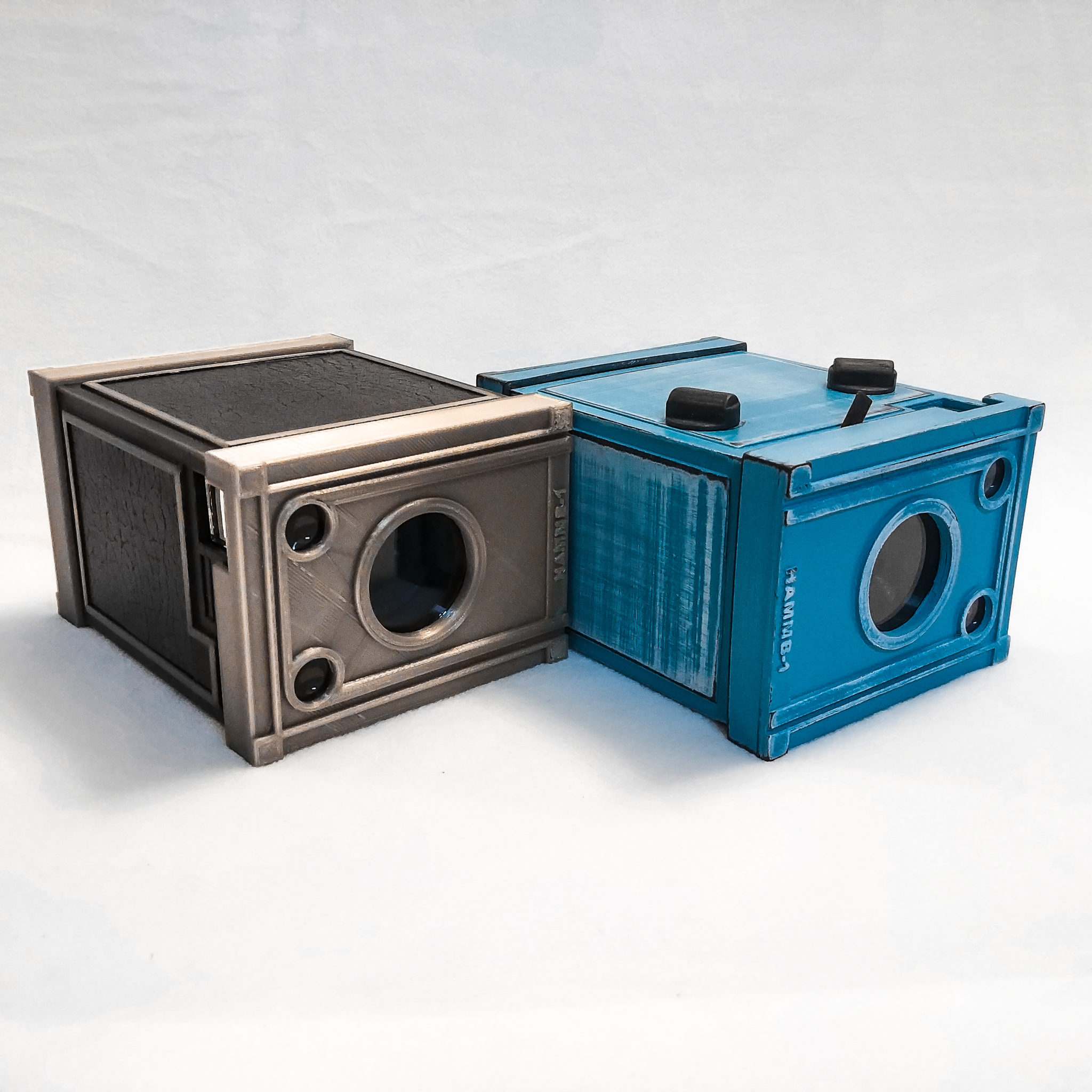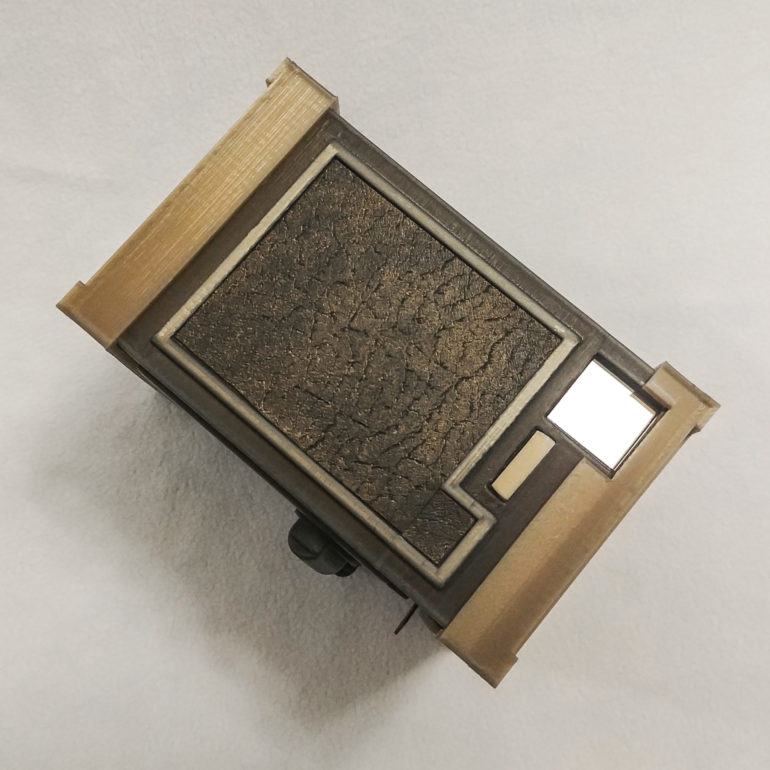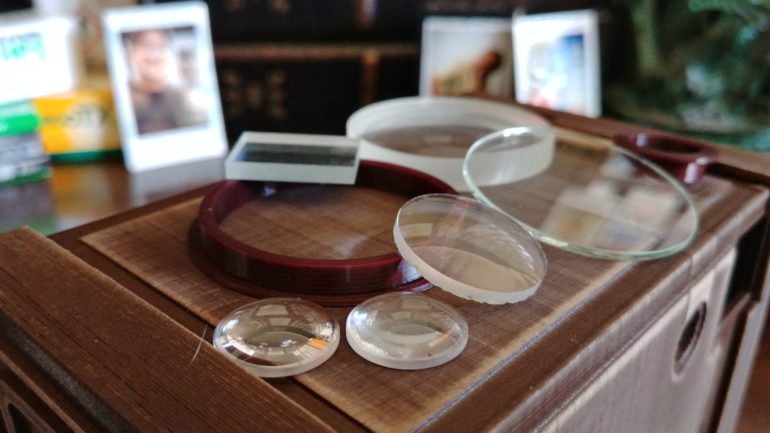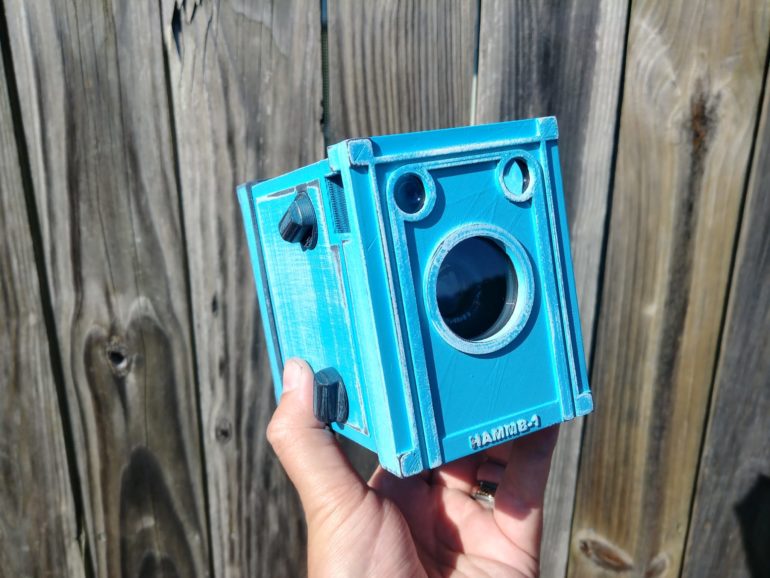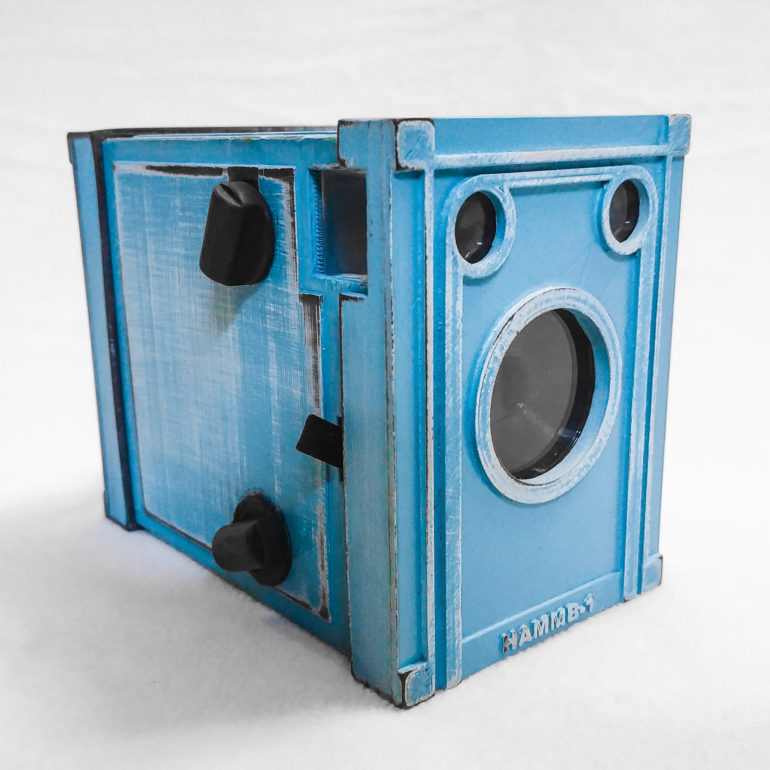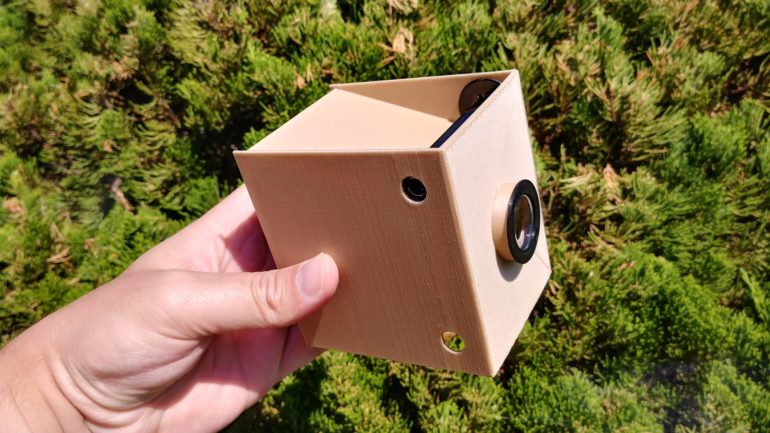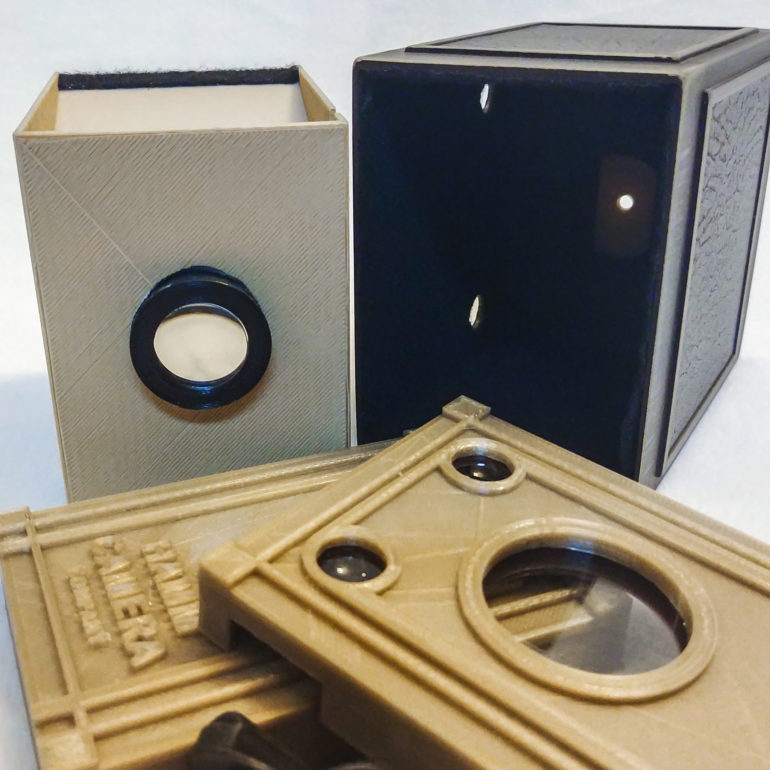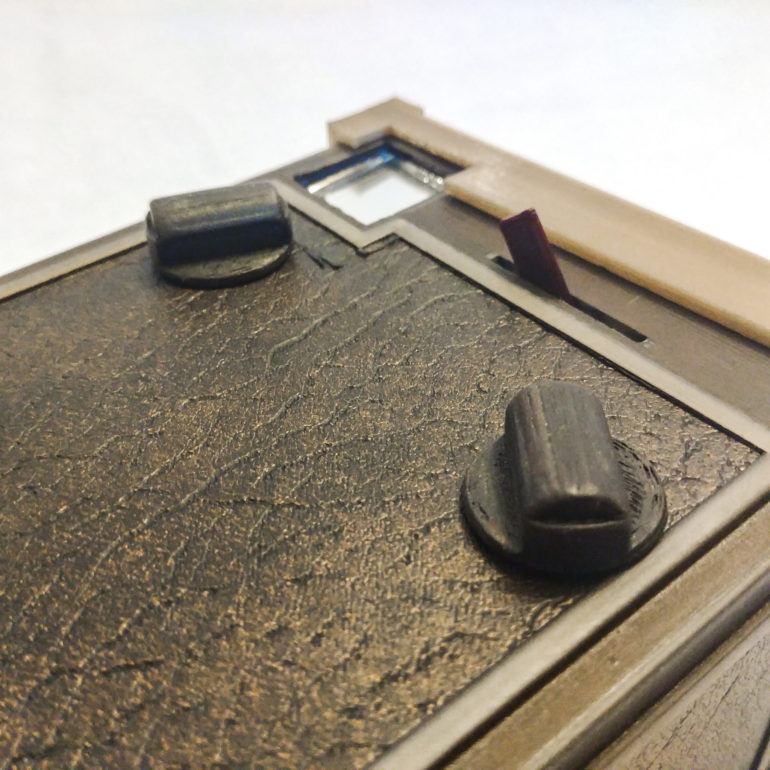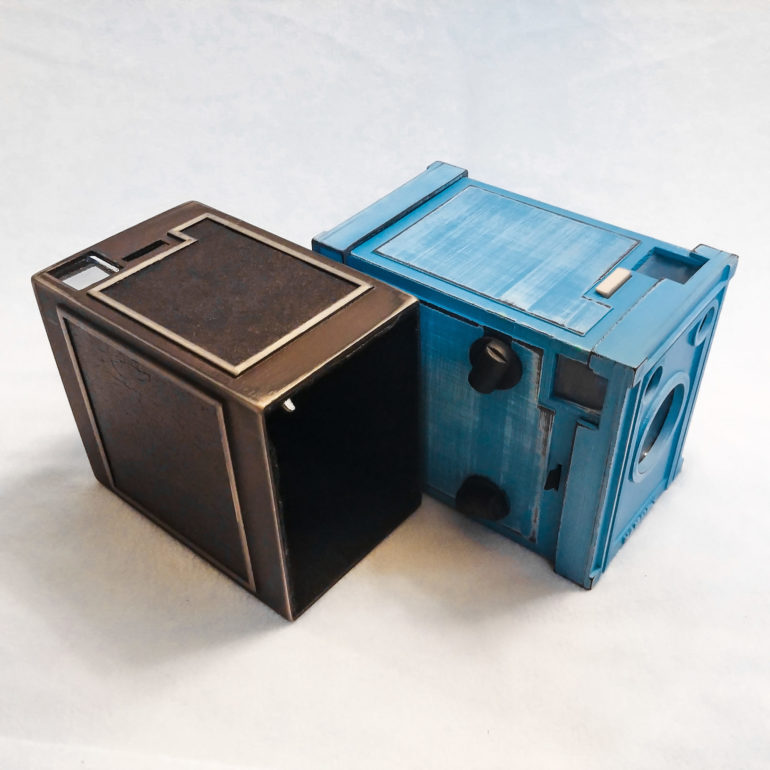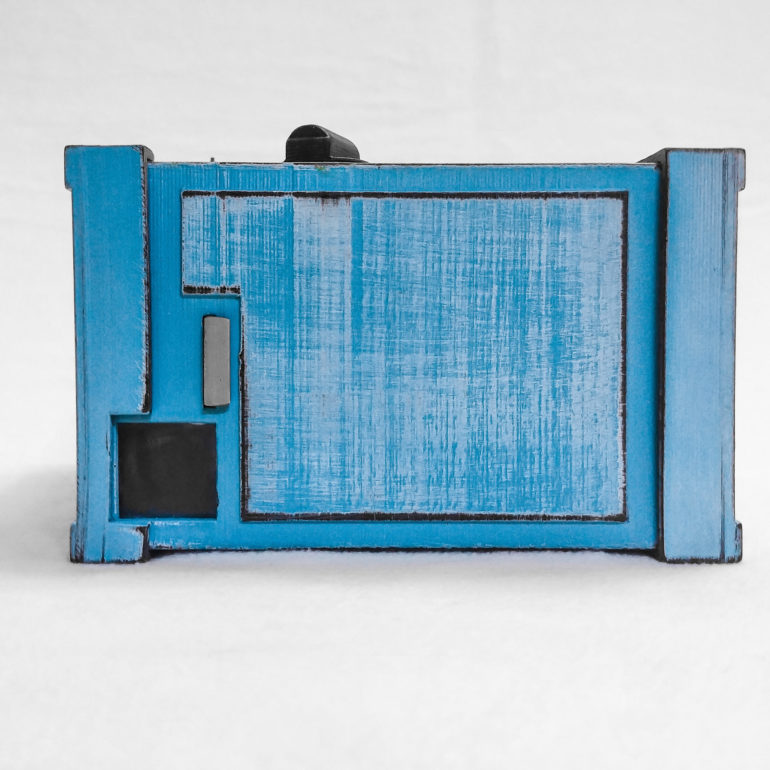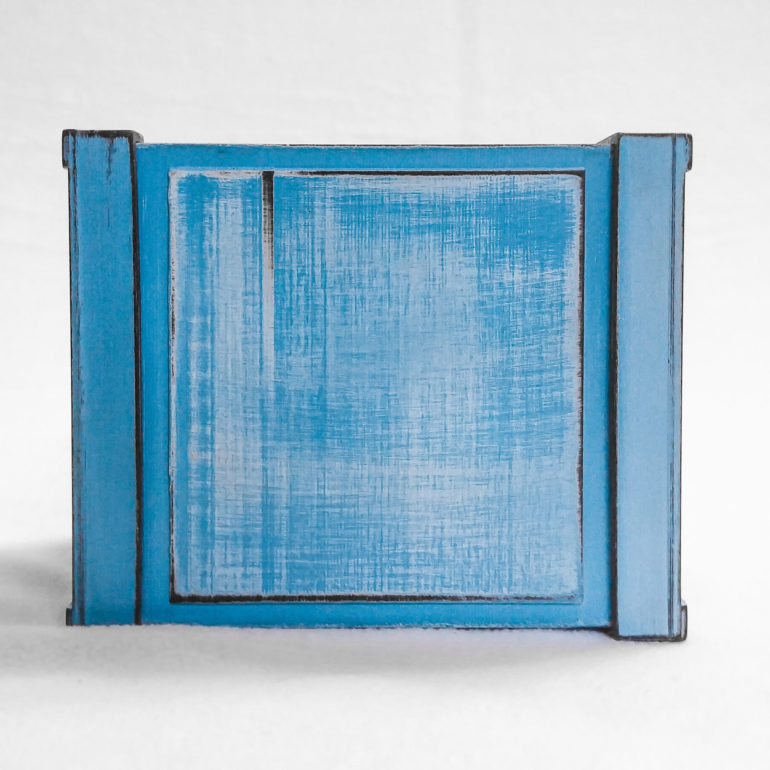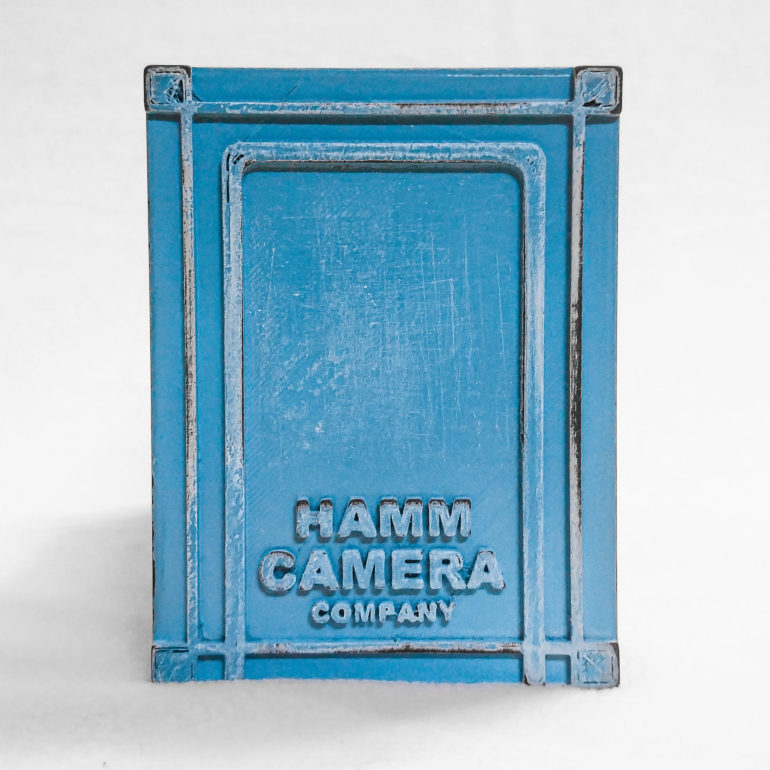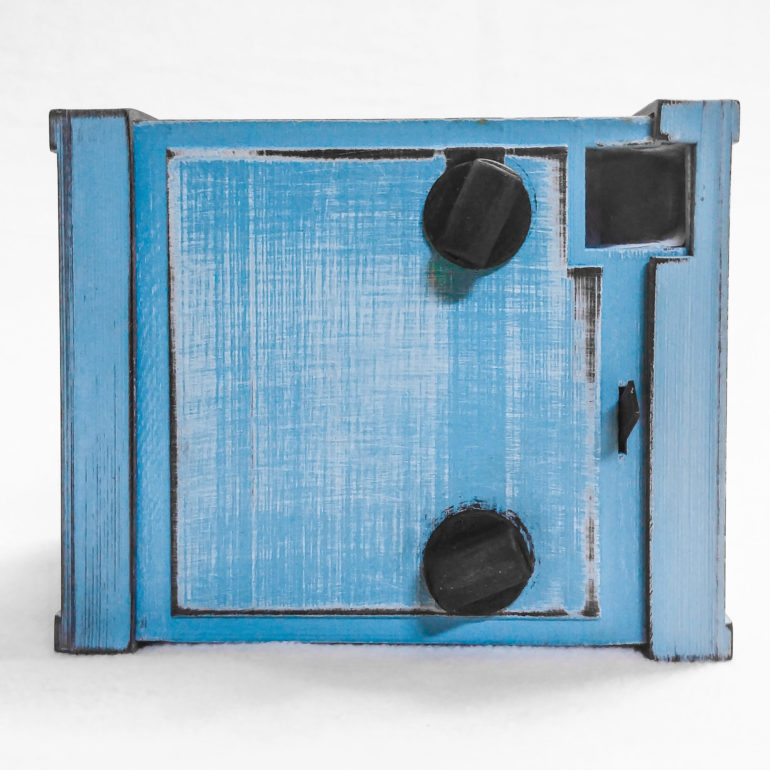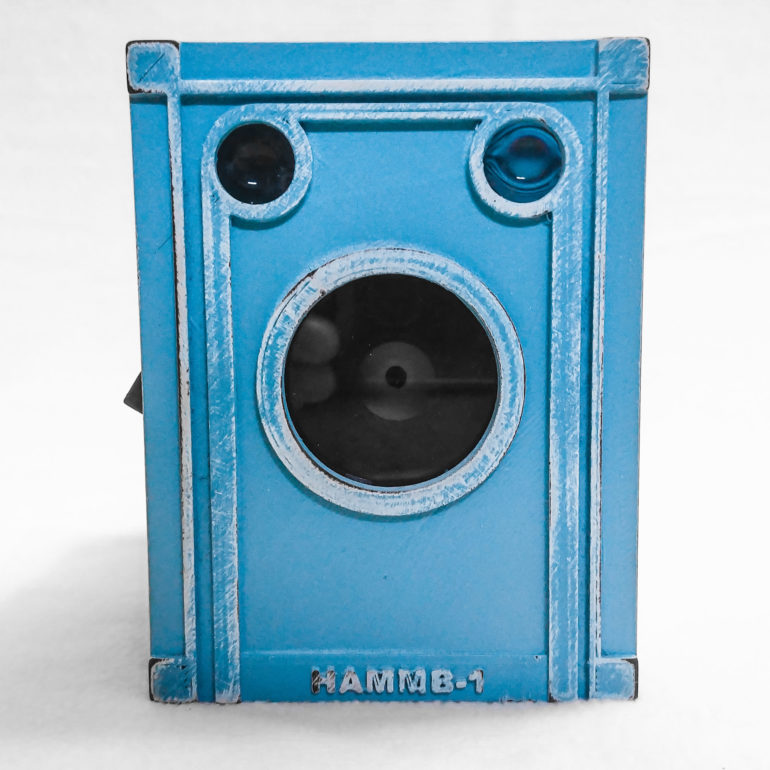Last Updated on 12/22/2017 by Chris Gampat
No, you read that right: the NuBox 1 is aiming to be the world’s first interchangeable lens box camera on the market.
When you go about looking at box cameras, you probably think about pinholes or something like a Kodak Brownie. But now, a darling of the analog world is seemingly returning in the form of the NuBox 1. Created by Hamm Camera, this camera has a working lens, aperture and shutter speeds. Robert Hamm, the company’s founder, has done videos online such as an investigation into whether or not Instax is actually film. Robert is claiming the lenses also have no vignetting to them.
Be sure to follow Hamm camera on Instagram and Facebook
According to the media kit:
Special attention was given to the lens. We are using an optical-grade positive meniscus 24mm glass lens with a 95 mm focal length. We went big on the lens. We posi- tioned the lens in the cartridge so the user can choose di erent elds of view each time they change film.
The NuBox 1 apparently has lenses that go from f11 to f22, which can focus from eight feet to infinity and only have 1/200th as the single shutter setting. There’s also ground glass and polished mirrors for the viewfinder. What we know is they’ll come in black, brown, and blue. We got some time to speak to Robert Hamm, the creator of the NuBox 1.
—–
Hi Chris. Thanks for your support and interest with this project. It’s true that analog film has been a passion of mine or some time. I’m very interested in innovative companies like MiNT Camera and the new Polaroid Originals.
Formats such as instant film intrigues me because of the limitations of the medium as well as the magic of seeing your images develop before your eyes. However, if I consider what I love most about analog photography, the unique characteristics of paring lens, body, film, and technique; well I realize that film, real film, is in my soul.
The box camera is specifically important because it is the format that introduced the world to point and shoot photography. It made the quintessential “family photographer” possible. This ushered in a visual heritage of a family history not found before.
Phoblographer: Tell us about your inspiration? We’re sure some of it was with the Kodak Brownie, right?
Robert: Sure. Some of my inspiration came from the Brownie, but it was the AGFA Cadet B2 that really got me going. I was visiting my grandmother in Rocky Mount, North Carolina in January 2017. It’s always great to visit grandmother. I have such fond memories of growing up in that house, cutting celery for holiday stuffing, chopping pecans for pecan pie, climbing the Dogwood and Hickory trees; just great memories.
Well, on this visit, grandmother asked me if I could develop some old 127 film she had. It contained images of my grandfather whose long since passed, and she wanted me to develop it. I asked her where the film was and she went to a bookcase, opened some drawers, and emerged with the B2.
I was stunned. I had never considered the box camera as a format that I wanted to shoot, but in that moment, knowing that my grandmother, grandfather, and great grandparents had used this camera, or something similar, sparked an intense connection. We took the film out. It was intact and in good condition on the spool. But more important to me than that was that the camera was still working. The shutter worked, the viewfinders worked (albeit a bit dusty), and the box was in great condition. Grandmother said she had had that camera for about 50 years!
It was looking at grandmother through the ground glass viewfinder that I knew I had to make one.
Phoblographer: Many photographers who are new to film probably have no idea about this camera and how they work. So would you mind walking us through the process of how the NuBox 1 works please?
Robert: I’m excited to share the simplicity of the Nu-Box 1 with you and your readers, Chris. I think the biggest draw of this camera is its simplicity. There is no focusing wheel. At the most common aperture for everyday photography, f22, everything about 7 feet to infinity is in focus. Framing a shot is as simple as looking through a ground glass viewfinder. What you see is what you get. There are framing indicators on the ground glass, but these will be used for the additional lens-cartridges when available. The shutter is a single action, single throw switch rated at 1/200th of a second. Just push the lever down to take a picture.
The film is loaded onto the cartridge on two spools. One spool is the supply spool. This spool contains all the film. You place it in the cartridge by snapping it into place and then pull the film onto an empty spool. The film is designed for this process, so it has a paper backing to protect the film and enough lead film to properly load the camera. Once the film is on the take up spool, you then click it into place. From this point you push the loaded cartridge into the main body, attach the winding knobs through the main body into the film spools housed in the cartridge, and wind the take up spool until you see the number 1 in a small window on the backplate of the camera. That’s it. There are several steps to the process, but it is not difficult by any means to load and use the camera. Once loaded, push the shutter lever, and wind the film to the next number. Simple as that.
Phoblographer: How many prototypes did you go through? And as you were creating the different cameras, what were you discovering and learning in the process to create the NuBox 1?
Robert: Chris, this is a great question. Wow, how many prototypes… well I’ve been through 50 different main body designs, at least 33 front plate designs, 28 backplate configurations (and counting), the shutter…. Oh man. That has had over 100 designs. The shutter was hard, hard. More on that in a moment. Finally, the cartridge. There have been four different designs with the final design requiring about 30 iterations to come up with the correct radius for the film to advance and not require rollers. The aperture sticks were the easiest to design during this whole process. I’ve been through about five designs.
An interesting fact for you is that my original design included a rotary aperture, with the apertures on a rotary dial which the user could spin to select the desired aperture. However, this was too complicated for my current design process and, even more importantly, would have severely impacted the kinds of additional lens-cartridges the camera could accept. Being that the main part of the camera is the modular lens-cartridges, the rotary aperture design was filed away for a future camera.
Talking about the most difficult part of the design process I would be dismayed not to share with you my shutter shock, so-to-speak, problems. The first thing I wanted to do was improve the shutter speed over the original cameras. Generally speaking, box cameras have a shutter speed around 1/50th to 1/100th of a second. I wanted to increase that speed to 1/200th of a second. This would help in many ways, but mainly it would reduce any hand shake from pressing the shutter lever and hand holding the camera. Also, it will help to take sharper images of people walking on the street. The problem with all of this is that it’s not a matter of using springs with higher torque, it’s also about design the shutter in a way that it does not destroy itself during the lifetime of the camera. The original shutters were made of metal on hard wooden housings. Some were very simple, and some were more complicates, but most are still working today. However, 3D printing small pieces to sustain high torque at a high volume of use was a tricky aspect to overcome. In the end I learned that the shape of the aperture could be adjusted and used in conjunction with a lower tension spring and stronger materials to create just the right mix for a long living product.
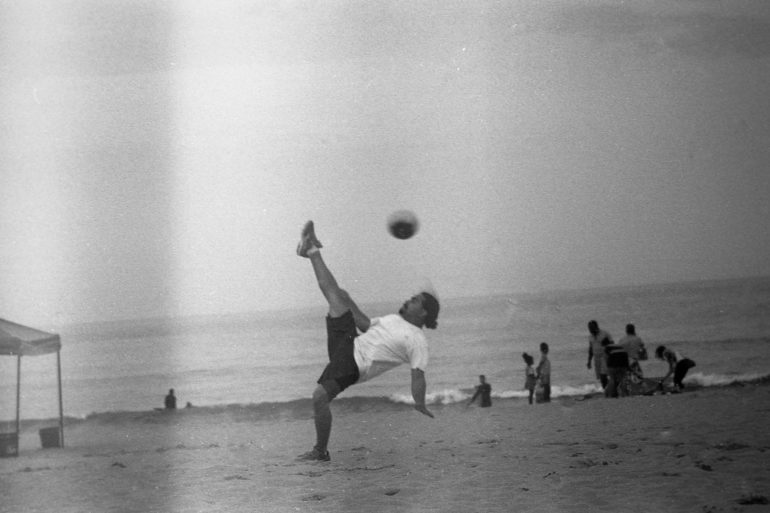
Another aspect of production was the film cartridge itself. I had to figure out a way to have the film spool from one cartridge to another without reaching a pressure point and scratching. Most box cameras get around this problem by using rolling pins to help the film coast around a 90-degree angle to the film plane, and then again to get to the take-up spool.
My problem here is that I wanted to create a product that I could monitor from start to finish. I didn’t want to design a camera that would be sent off for production. I want the production process to be organic to Hamm Camera Co. This meant that I would 3D print EVERY piece of the camera except for the lenses, which we have sourced from lens manufacturers. So, having a rolling pin process just isn’t in the design from the beginning. Instead I had to figure out the appropriate radius for a curve that could guide the film across without scratching.
I actually got my inspiration for that curve from the Japanese katana. I’m a long time black-belt in TaeKwonDo, Iaido, and American Kenpo. I have been practicing the sword for over 15 years. One of the things that always intrigued me about the katana was the curved blade, and more specifically, how that curved blade effects the angle and direction of the cut. The final analysis is that a katana with a curved blade has a longer cutting surface than a straight bladed sword of the same length. Although the curve is a physical, unmoving characteristic of the sword, the result is that the movement of sometime along that curve is elongated.
I used that same principal to make the radius of the curve on the film cartridge. It’s very effective, but the credit goes to the fine sword makers of Japan. Luckily, I was aware of this when finalizing the lens-cartridge design.
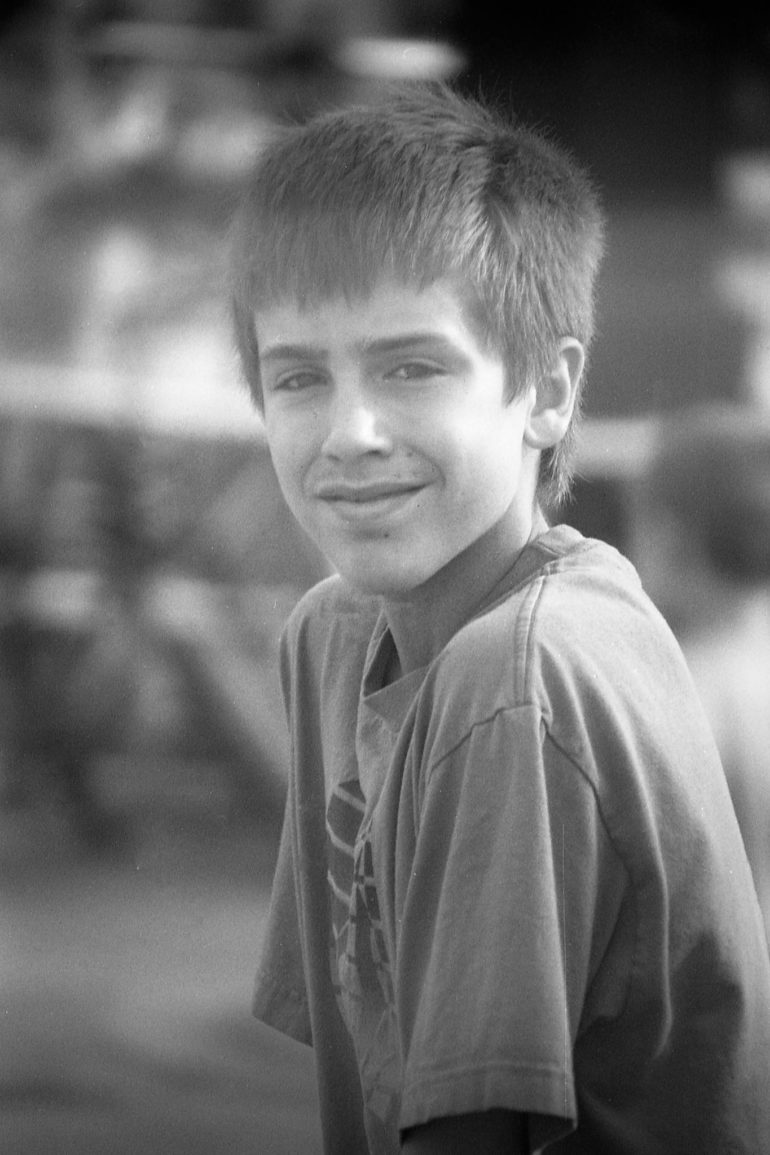
I used Acros 100 speed film and developed in ID11. I applied light editing in lightroom to clean up water spots and dust and up the clarity slightly.
Phoblographer: Since this is the world’s first ILC box camera, what did you discover as you were creating the camera and more importantly the lenses? It isn’t a leaf shutter for sure, but doing something like this is totally different from everything else out there.
Robert: That’s right, Chris. This is a very unconventional camera. That’s kind of the point, though. I tool inspiration from the original and innovated with the modern. It’s not retro tech, it’s just retro looking. A big part of development was the box itself. Society overall is so far away from film photography (although a resurgence is amidst us), let alone box cameras, that this is the perfect time to bring the box camera back That’s why I like to say that, “The box is back”!
I didn’t want to just make a box camera. I wanted something simple enough for anyone to use, just point and shoot, but also sophisticated enough for an enthusiast. That’s where the shutter, aperture, and lens-cartridge designs come in. Like we talked about before, the shutter is a single throw, single position switch. It completes its entire process of closing the shutter, opening the shutter, and then closing again during one actuation. This makes things simple.
Pair that with apertures designed for a lens at least twice as large as most box cameras and you have an opportunity to introduce shallow depth of field effects with portraiture. Of course, this will require a deeper understanding of photographic technique, but for the savvy photographer, it will offer challenge and reward like no other. Pulling off a shallow depth of field portrait with a box camera is like a small proof of knowledge. It’s hard. As with all difficulty, there is reward. The proof will be in the images. Going to the other end of the spectrum, I wanted the camera to be as easy as point and shoot. So, at f/22, everything from about seven feet to infinity will be in focus. At f/32 it’s five feet and beyond that will be in focus. Therefore, the difference between f/22 and f/32 have more to do with brightness conditions than anything else.
Phoblographer: What focal lengths will the lenses be?
Robert: This is the probably the most asked question, Chris. I’m happy to say that the lens-cartridge shipping with the Nu-Box 1 is a standard lens. This means that the 95mm focal length of the lens in medium 6×9 format will yield about the same field of view as a full frame camera at 57mm focal length.
Additional lens-cartridges in telephoto and wide angle are a little more difficult because of the general design, however I’m excited to say that the tele will be about 120mm in 35mm equivalent and the wide angle will be closer to 28-35mm in full frame equivalent.
One final note, that’s pretty exciting, is that the additional focal lengths allow for the possibility of a two or three element lens design. This has to do with converging and diverging the light to make the focal lengths work within the cartridge and ultimately the camera. It is for this reason that the in the lens-in-cartridge design was adopted, and that we left enough room behind the shutter block to accommodate future lens designs.
Phoblographer: Will there ever be any options for 35mm or Instax at all? I’m surprised that Instax isn’t the first choice.
Robert: Chris, I have to say, I love this question the most. YES! There are currently two designs I am working on that include a 35mm film format and an Instax Mini Format. About the Instax format, it was my first choice. However, the difficulty to develop for that platform required resources I didn’t have. Most people know of my relationship with MiNT Camera. I’ve made over 60 videos about the TL70, I’m the host of the TL70 Tech talk for MiNT Camera, and am their TL70 Expert. They are a great people over there; Gary and Tracy are the best. However, there is no connection between them and I on this camera. I have asked Gary for tips on presentation of the camera and it’s launch. I have a select group of people who will receive early units upon the successful launch of the Kickstarter, but none of my current relationships have had any developmental input. The whole thing stays more transparent that way.
A couple of interesting coincidences during this project have been that my computer was hacked and files related to the camera were removed. This bricked my process for about two months, and my house had an attempted break in at the same room where all my cameras and computers are. I made videos about each incident and posted it on my YouTube channel. Maybe it’s related, or maybe it’s not. Who knows. One thing is that it took some time, but we emerged no worse for the wear.
Chris, I’d like to take one last moment and say thanks for your interest. It’s been a long road, we are launching between January 15-20th, 2018 and have price points from $79.99, $119.99, and $169.99. shipping will be included for all US destinations, international orders will be accepted as well, and we are ready to launch our website just after Christmas. It’s an exciting time for us, indeed. Thank you for being a part of it. Cheers!


